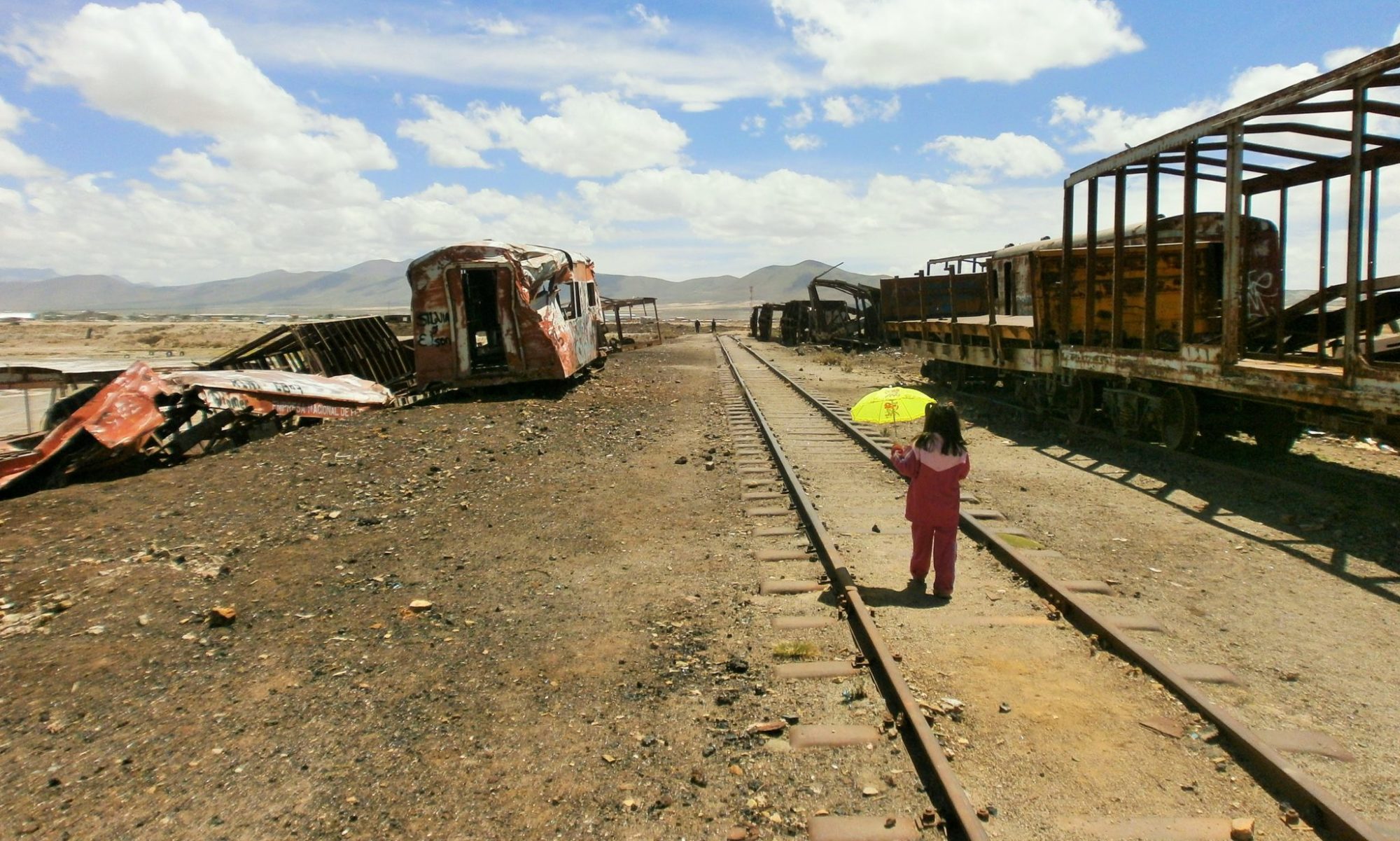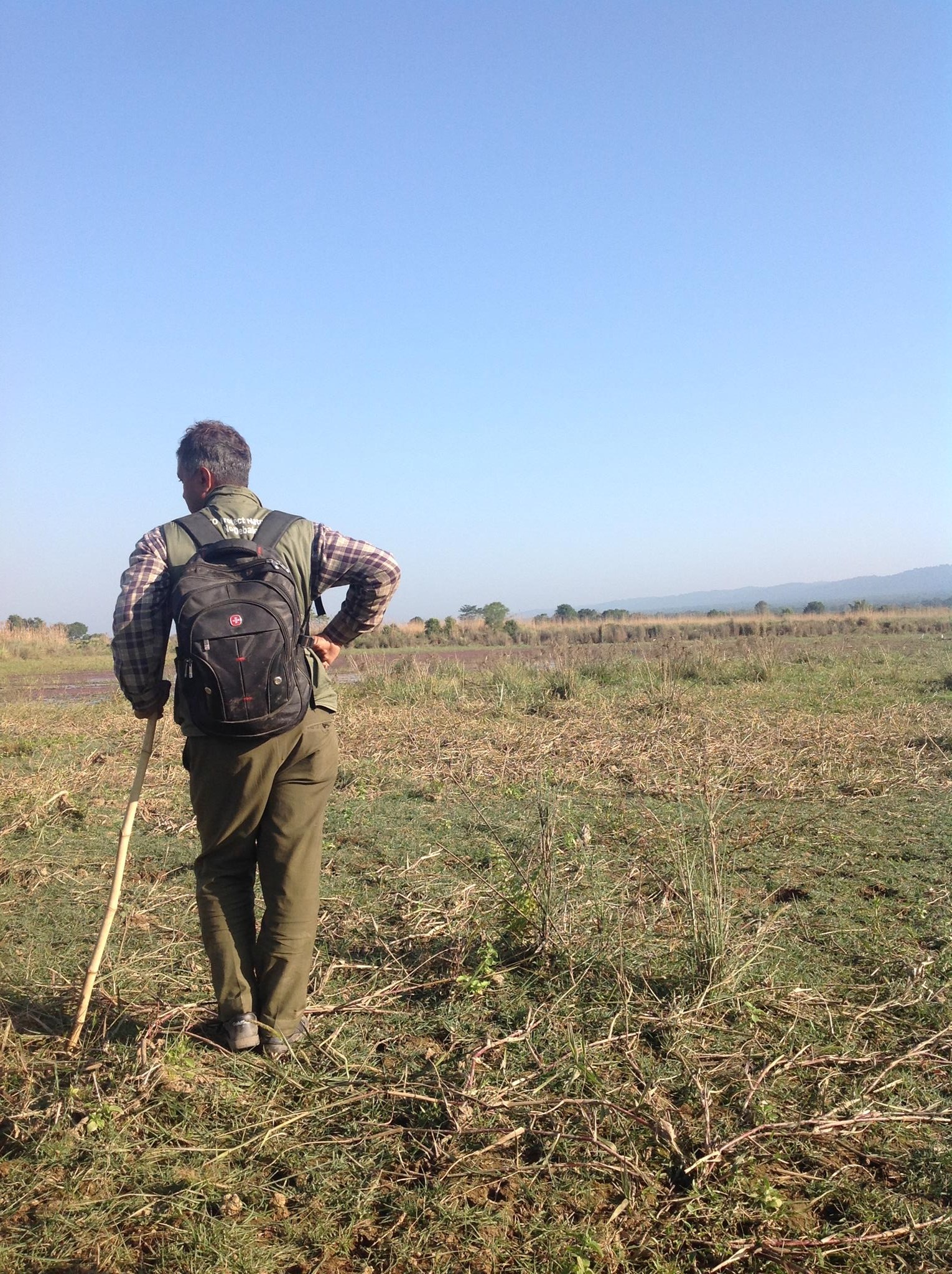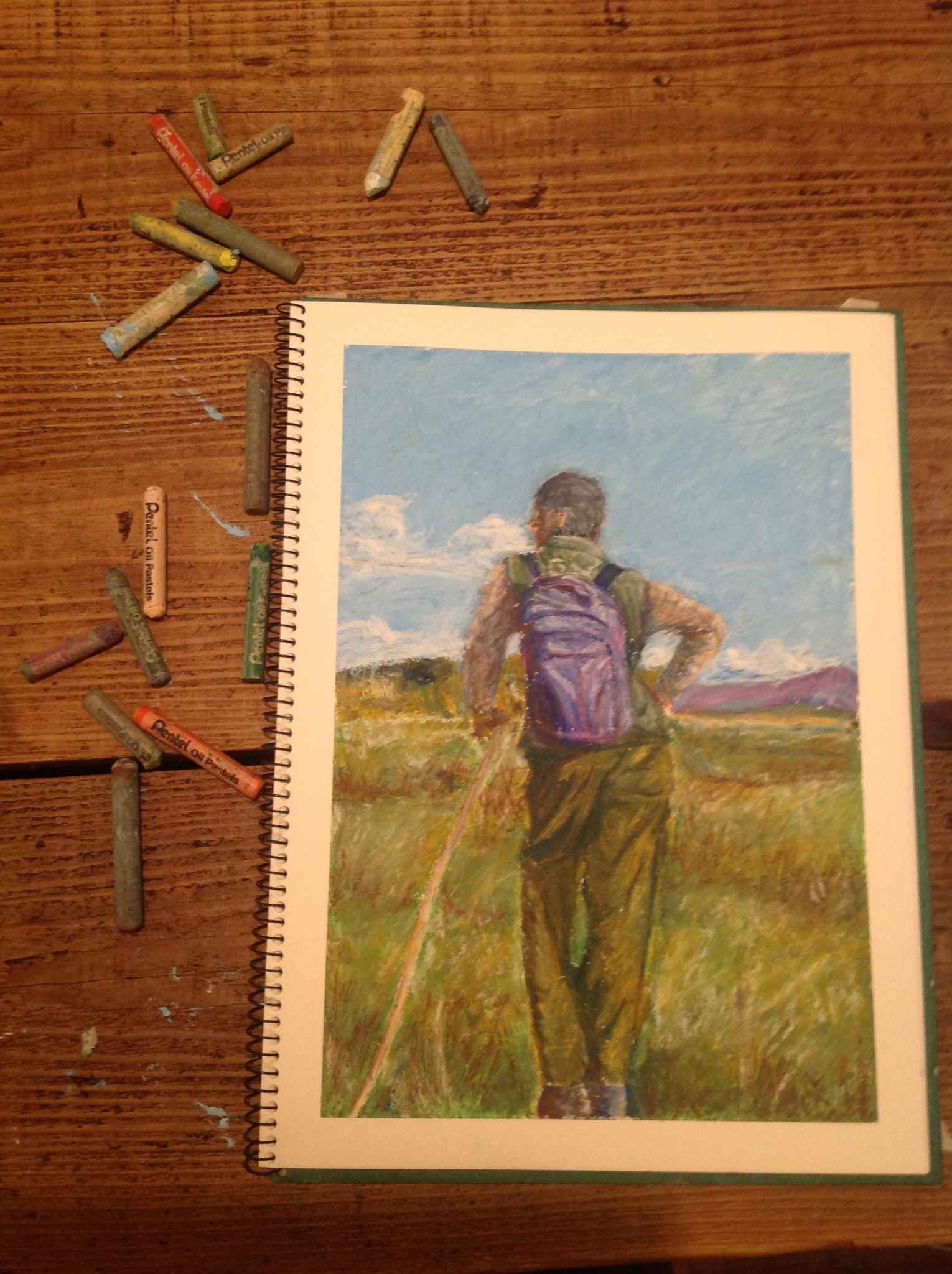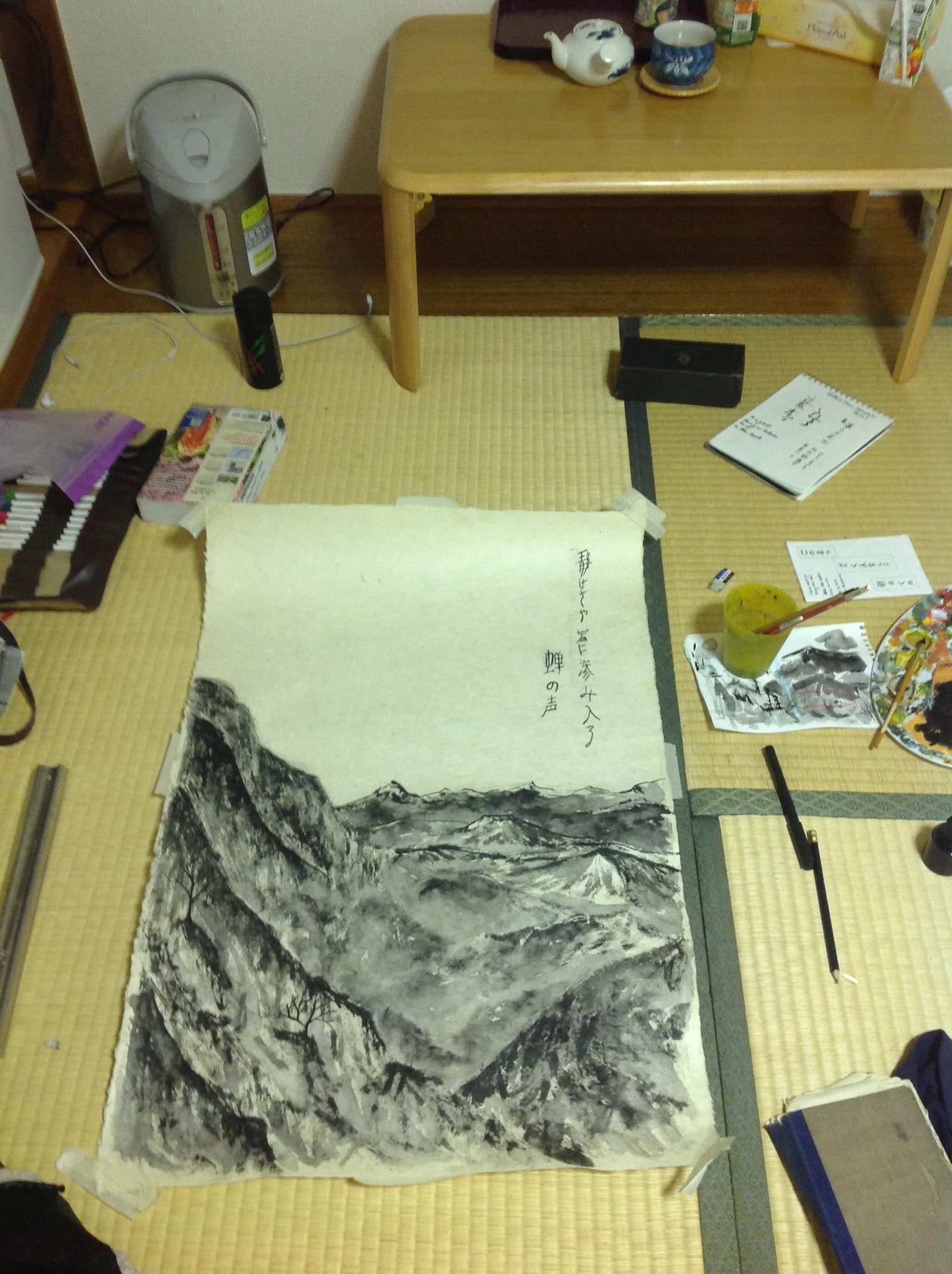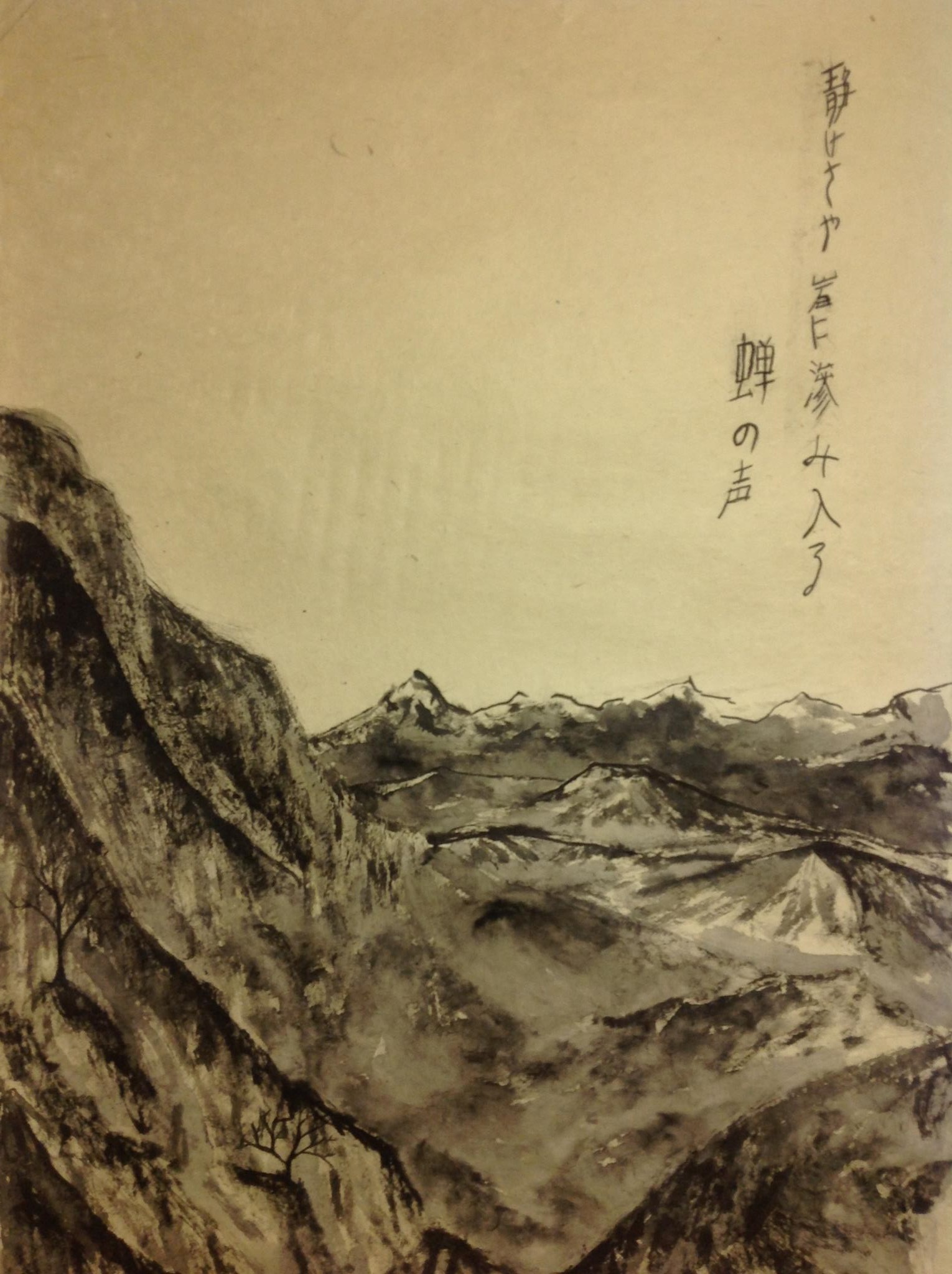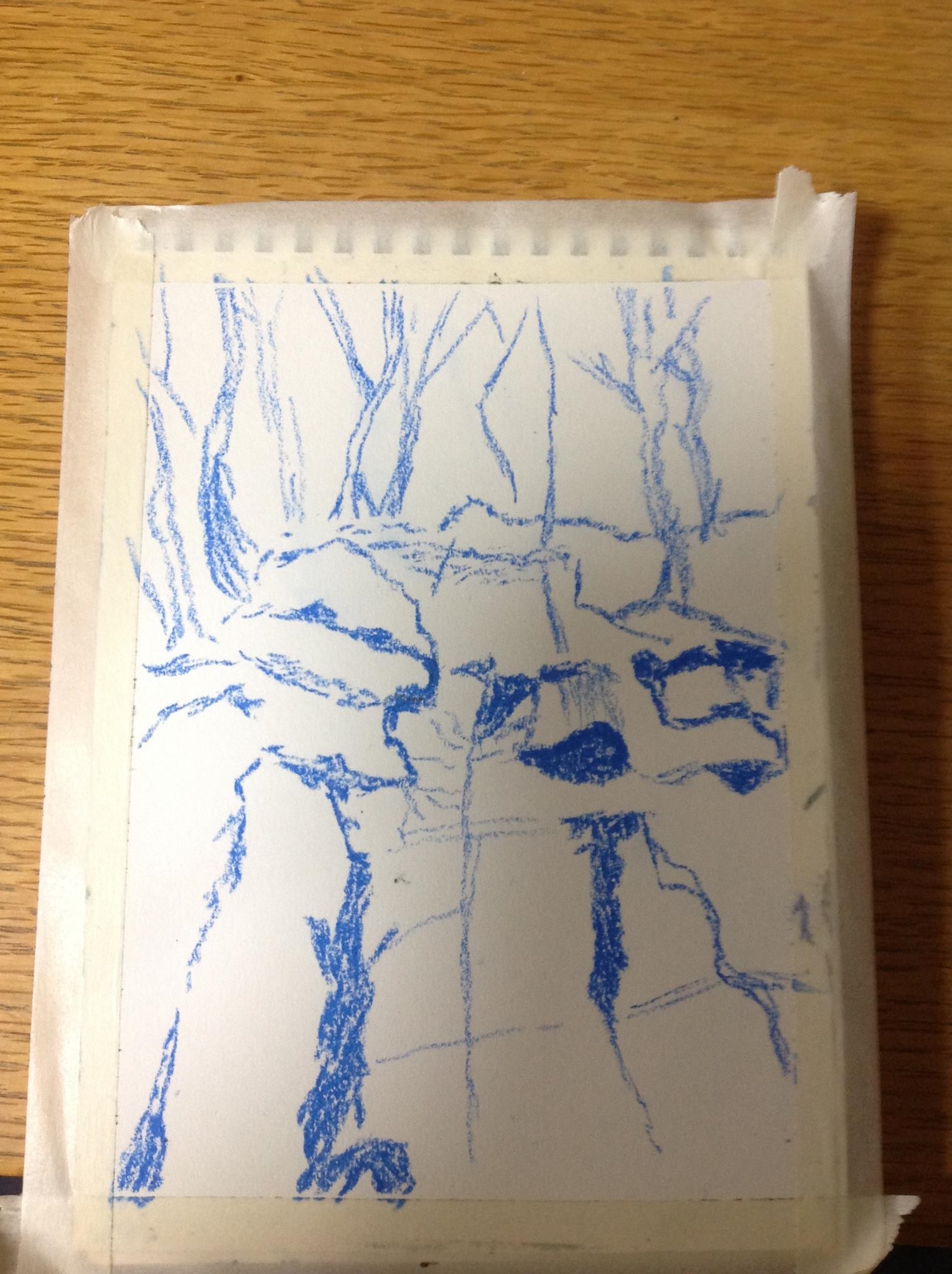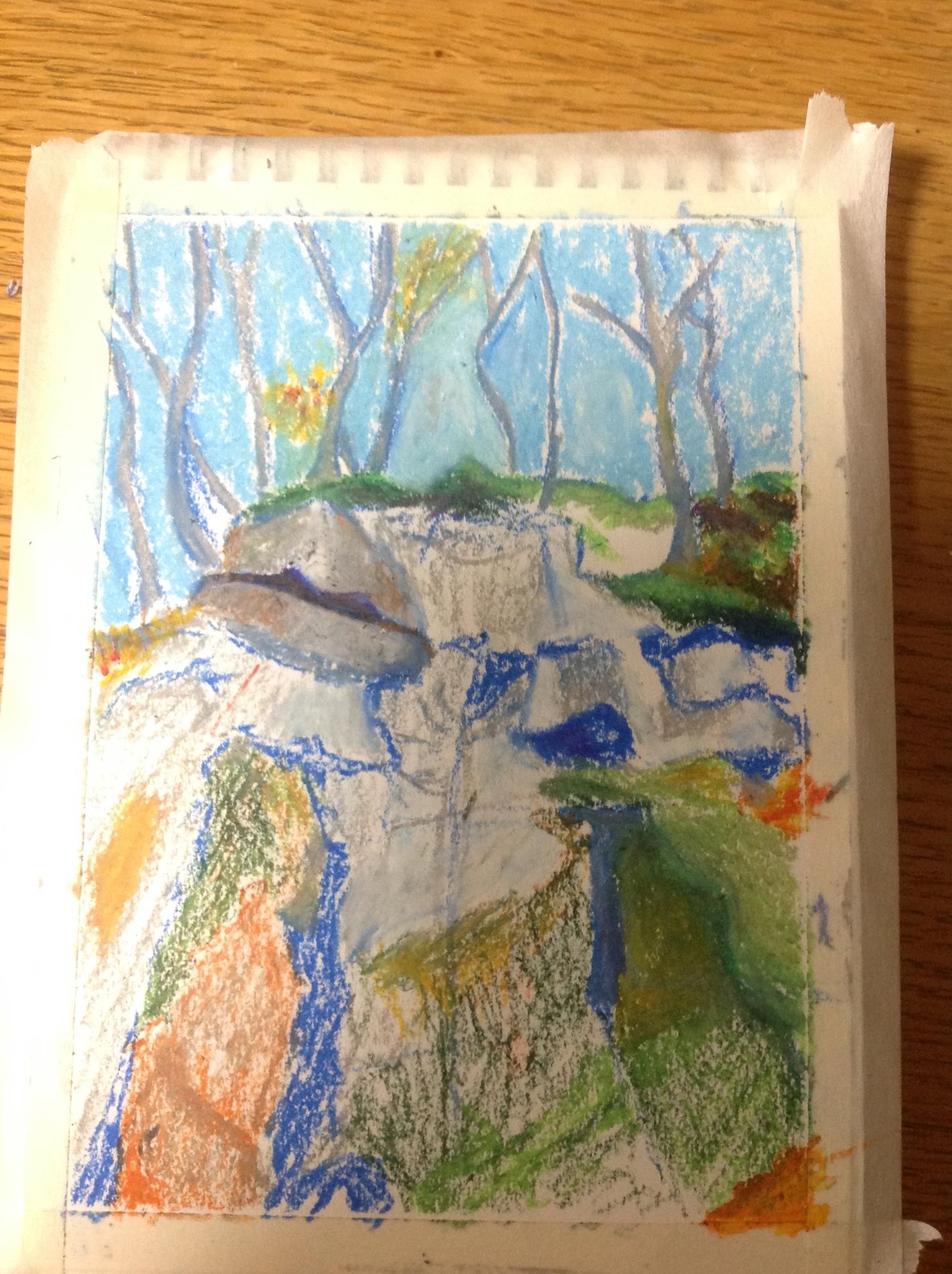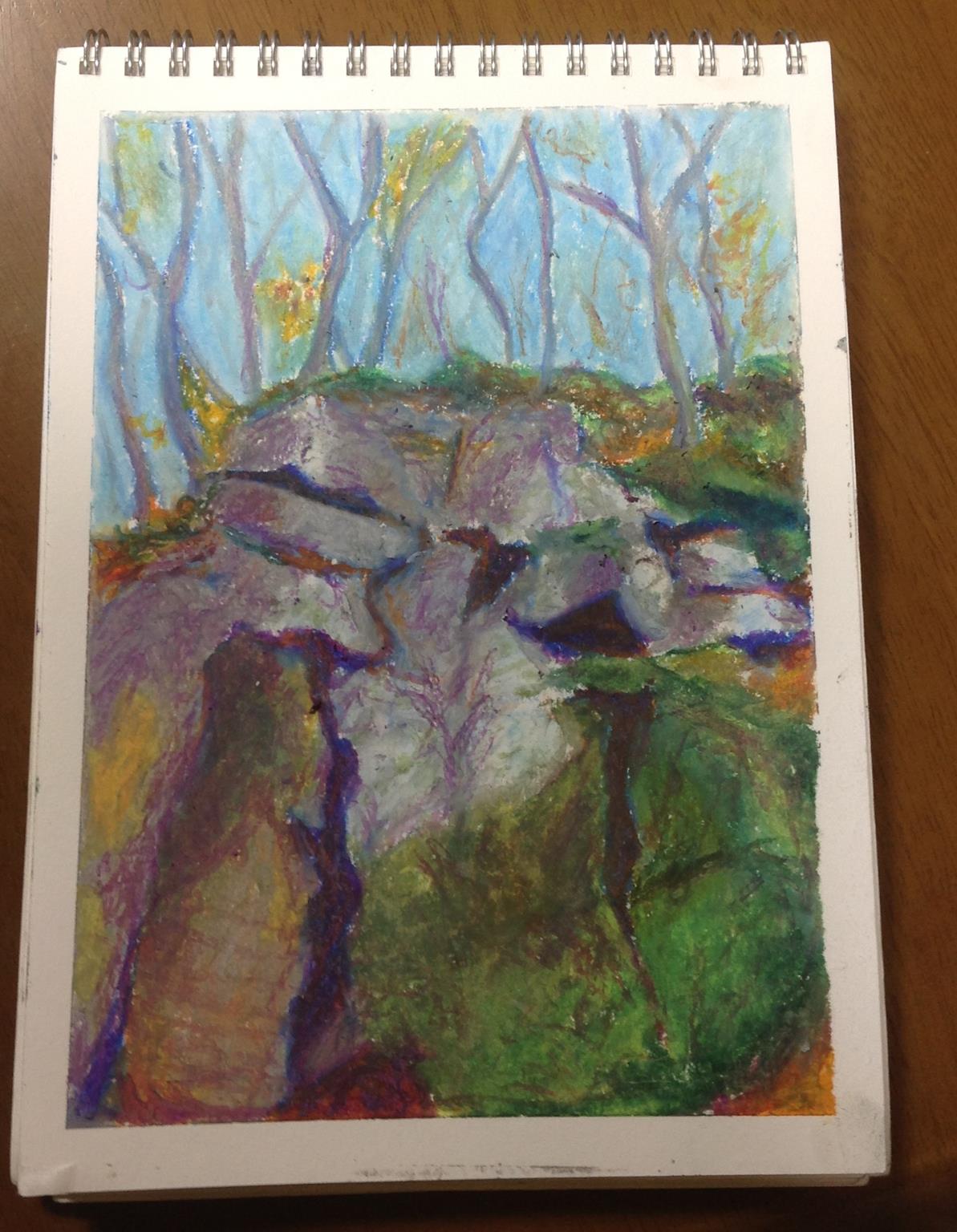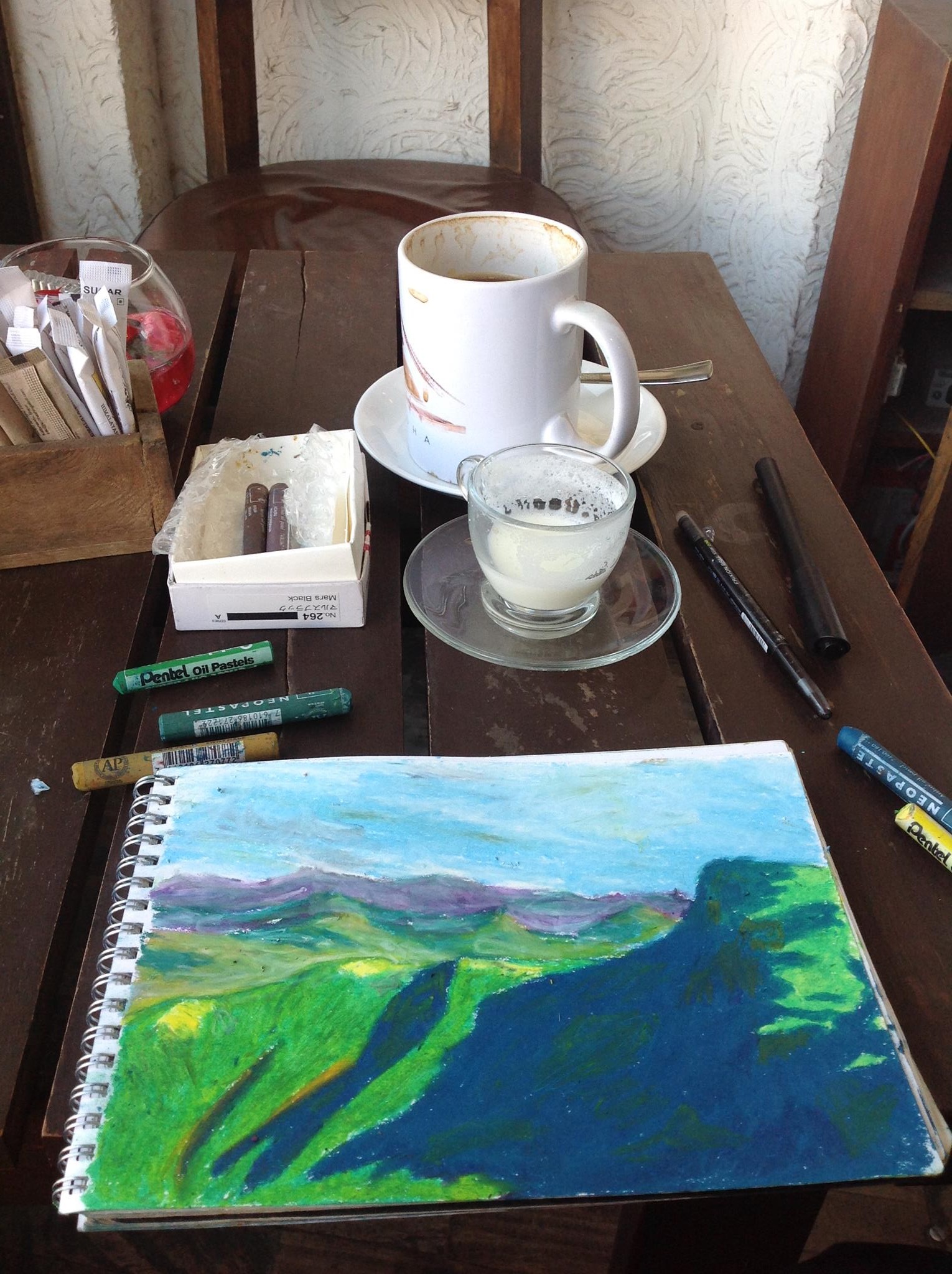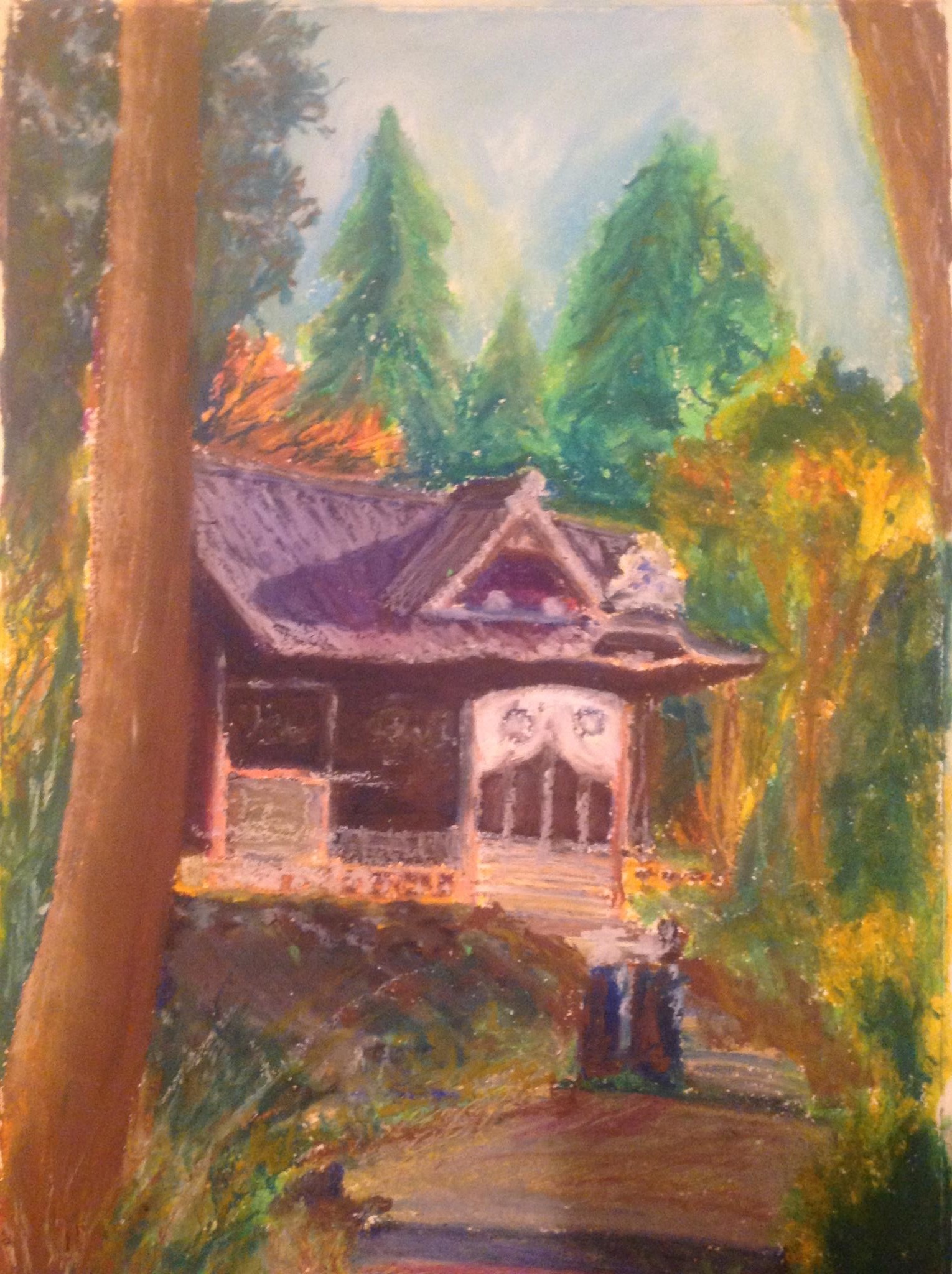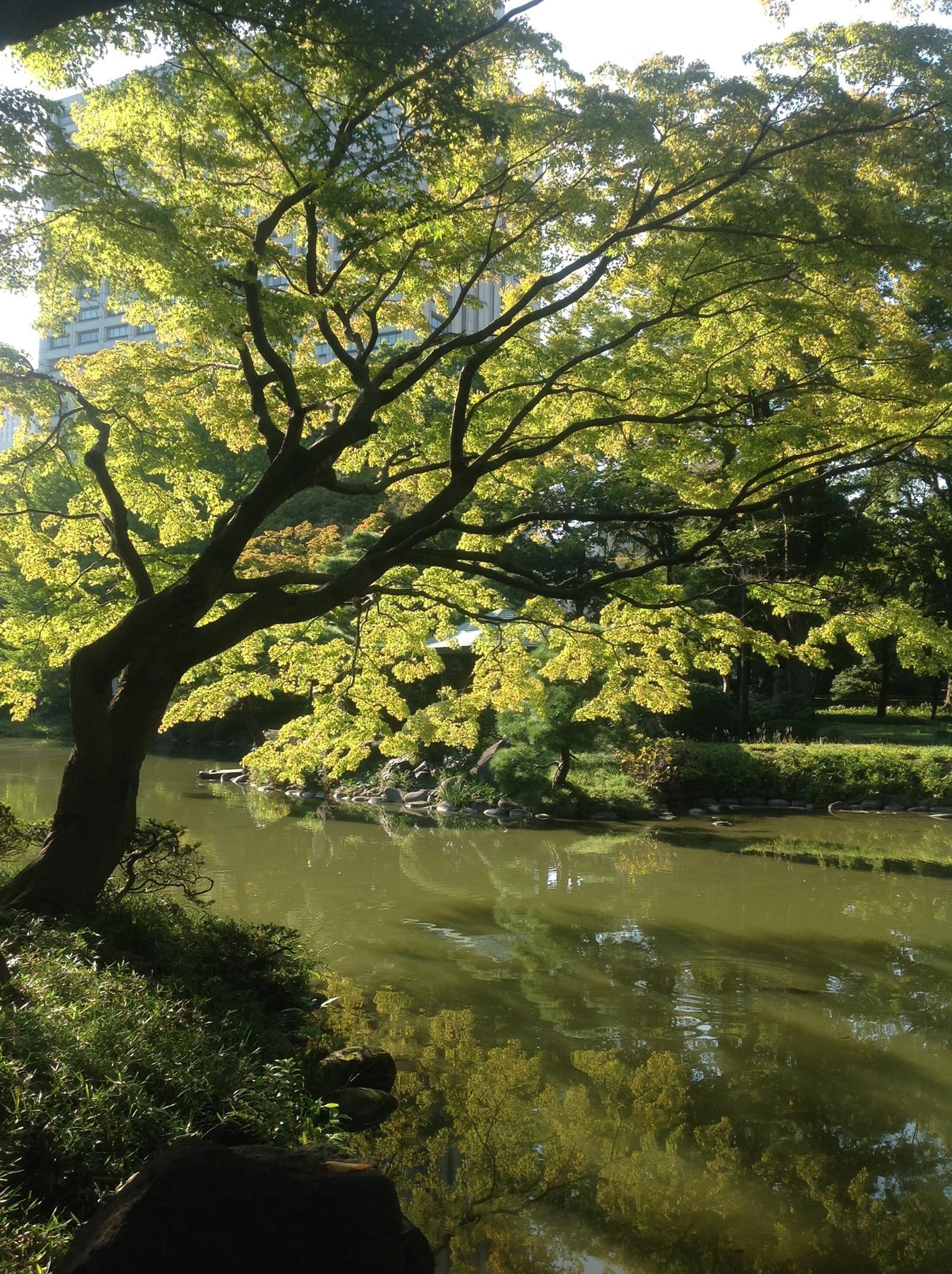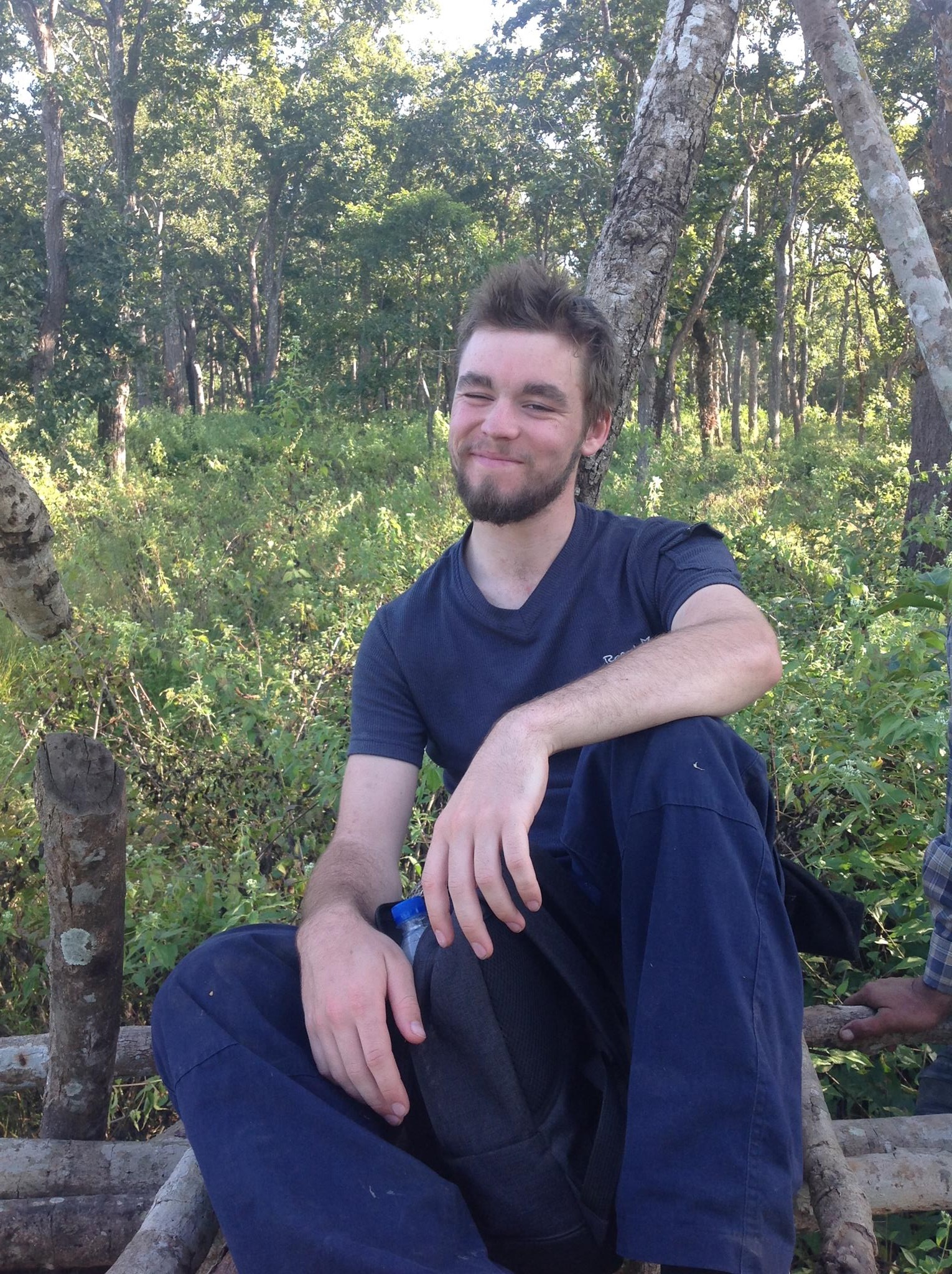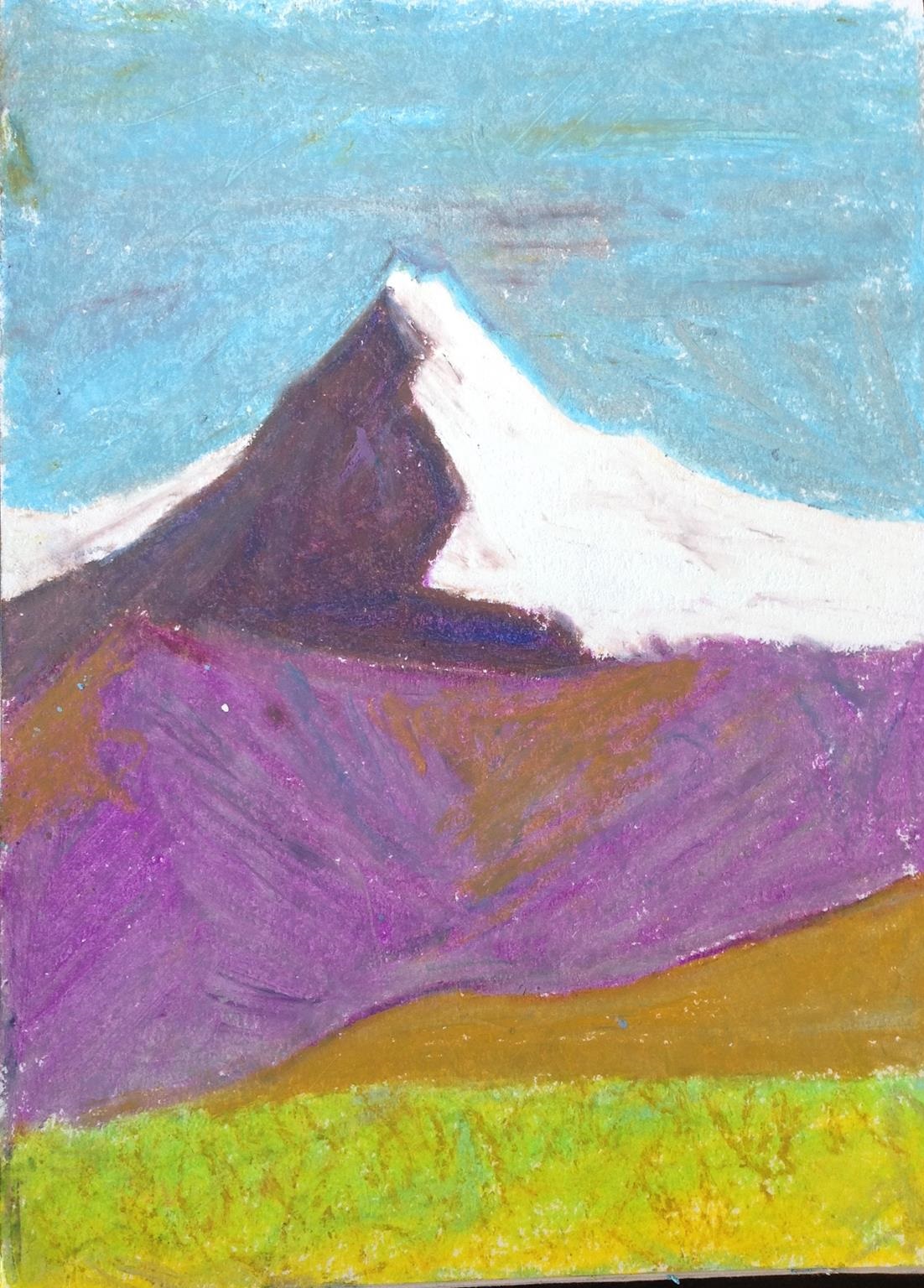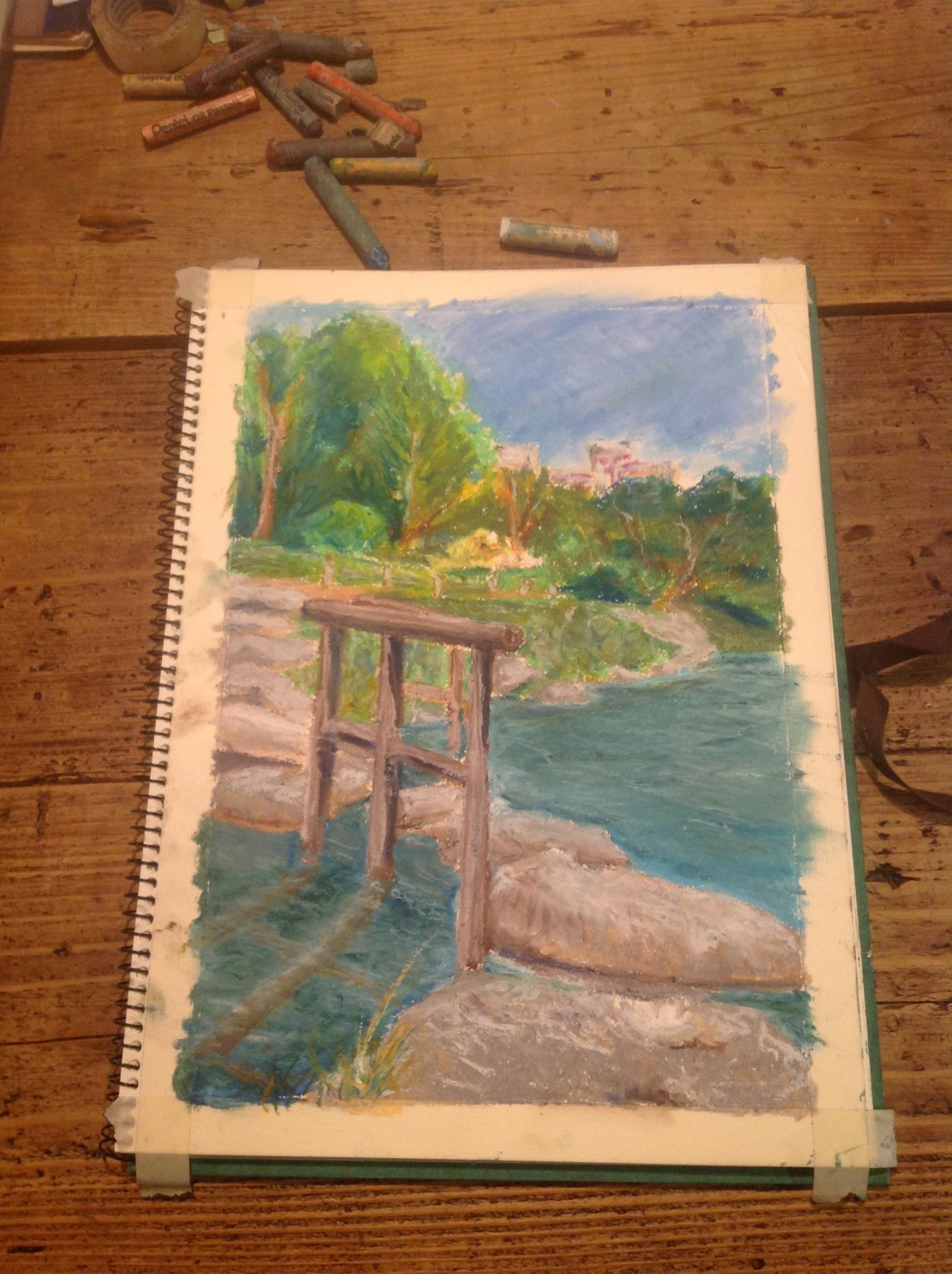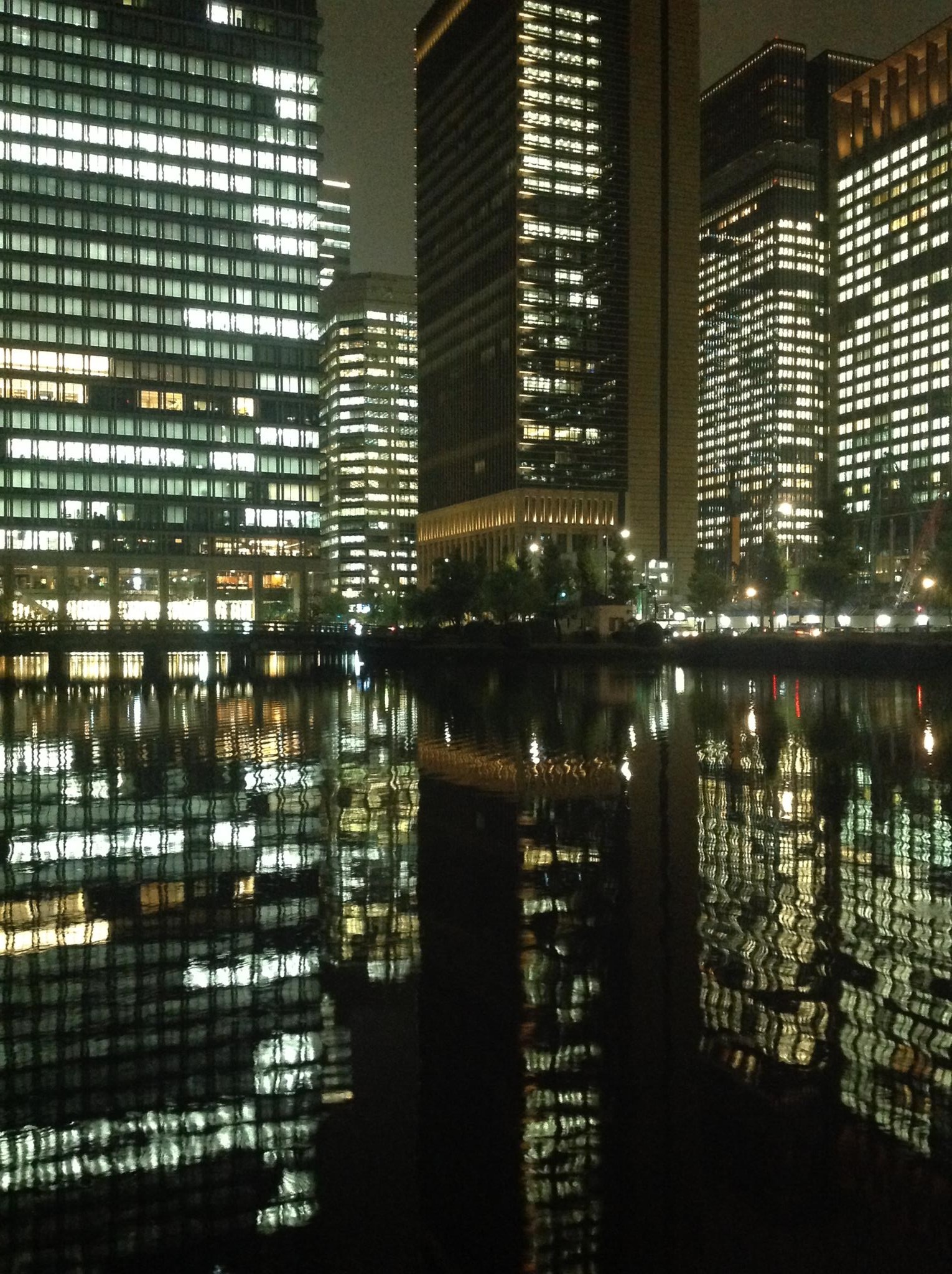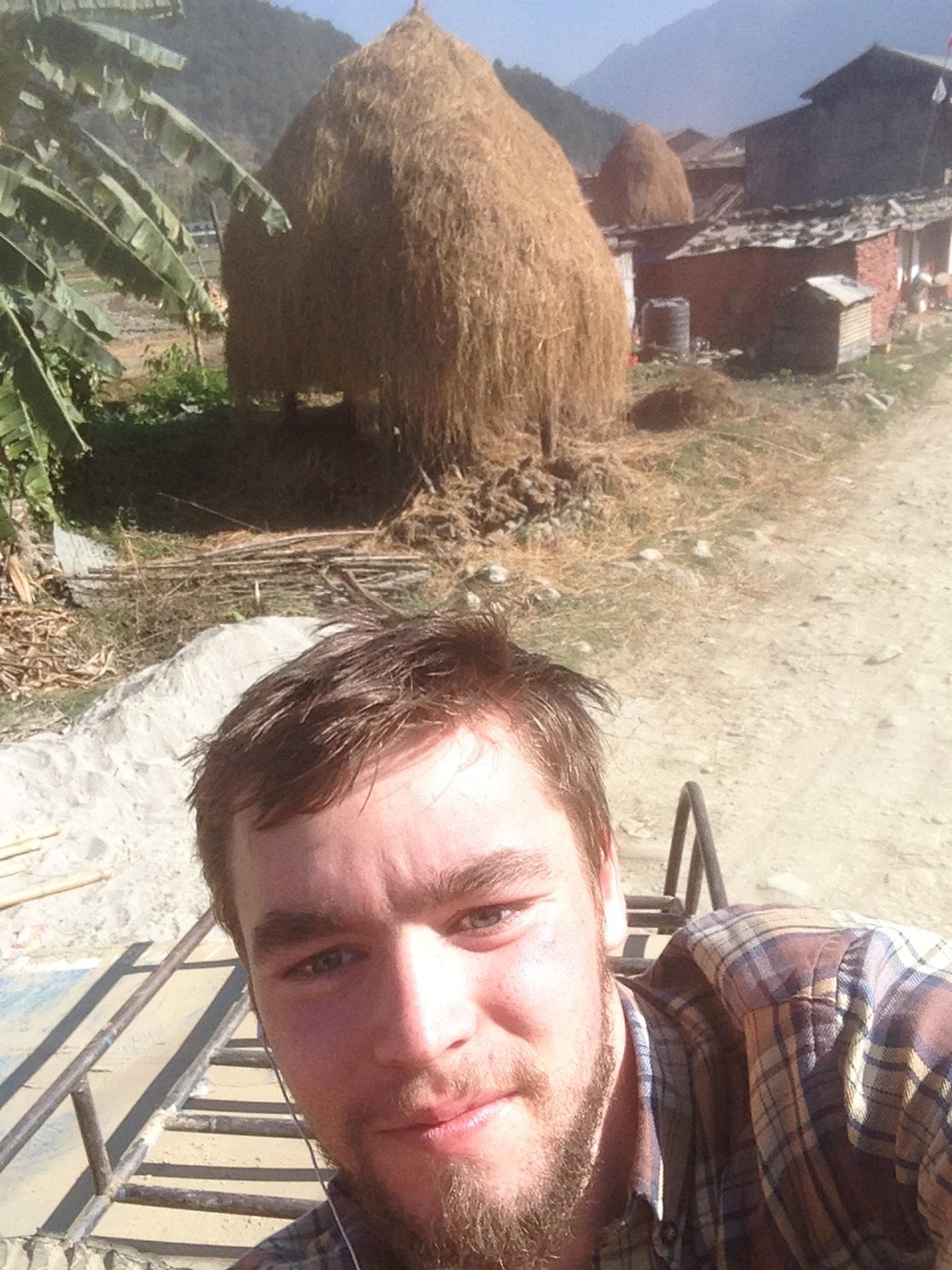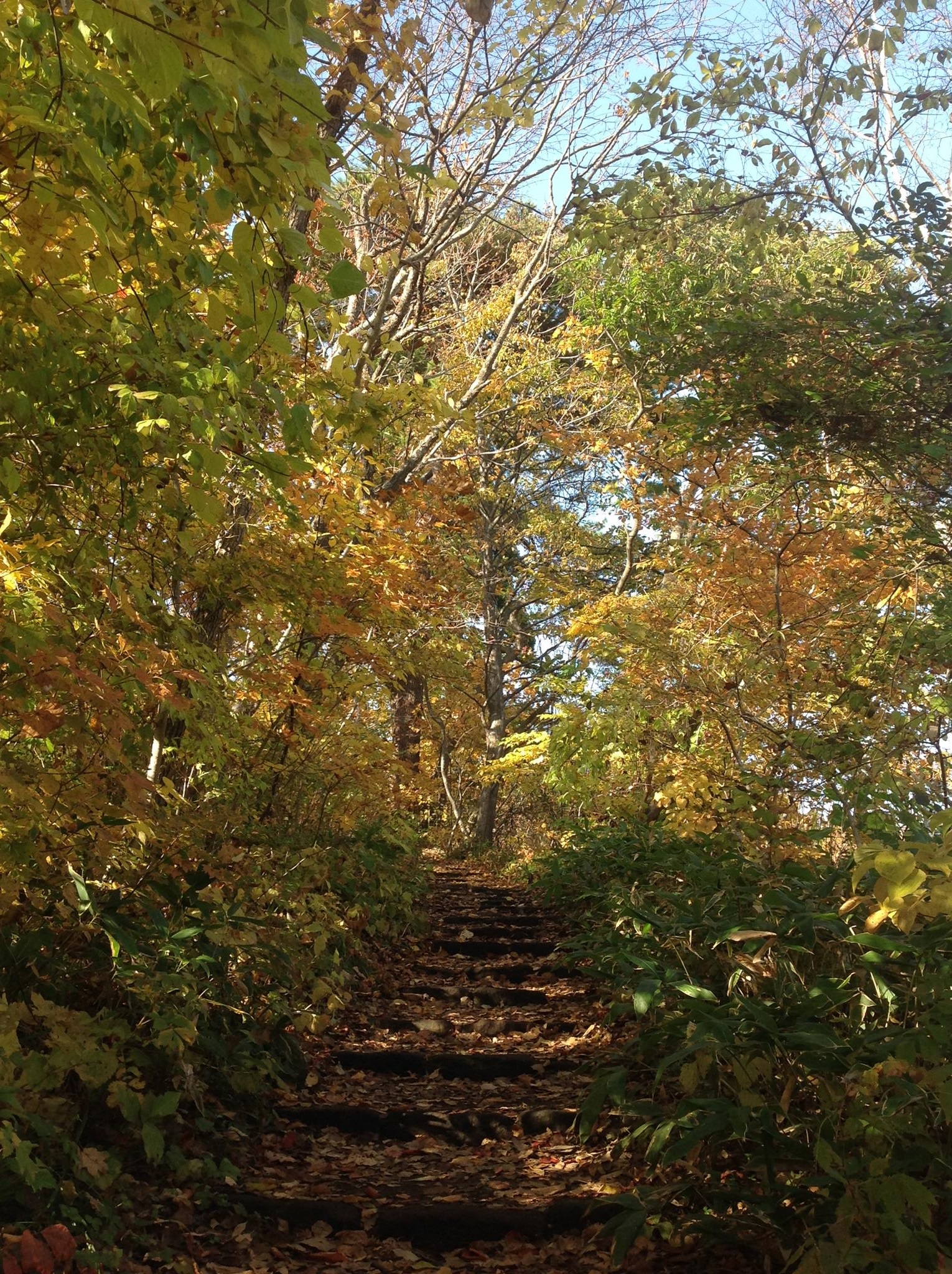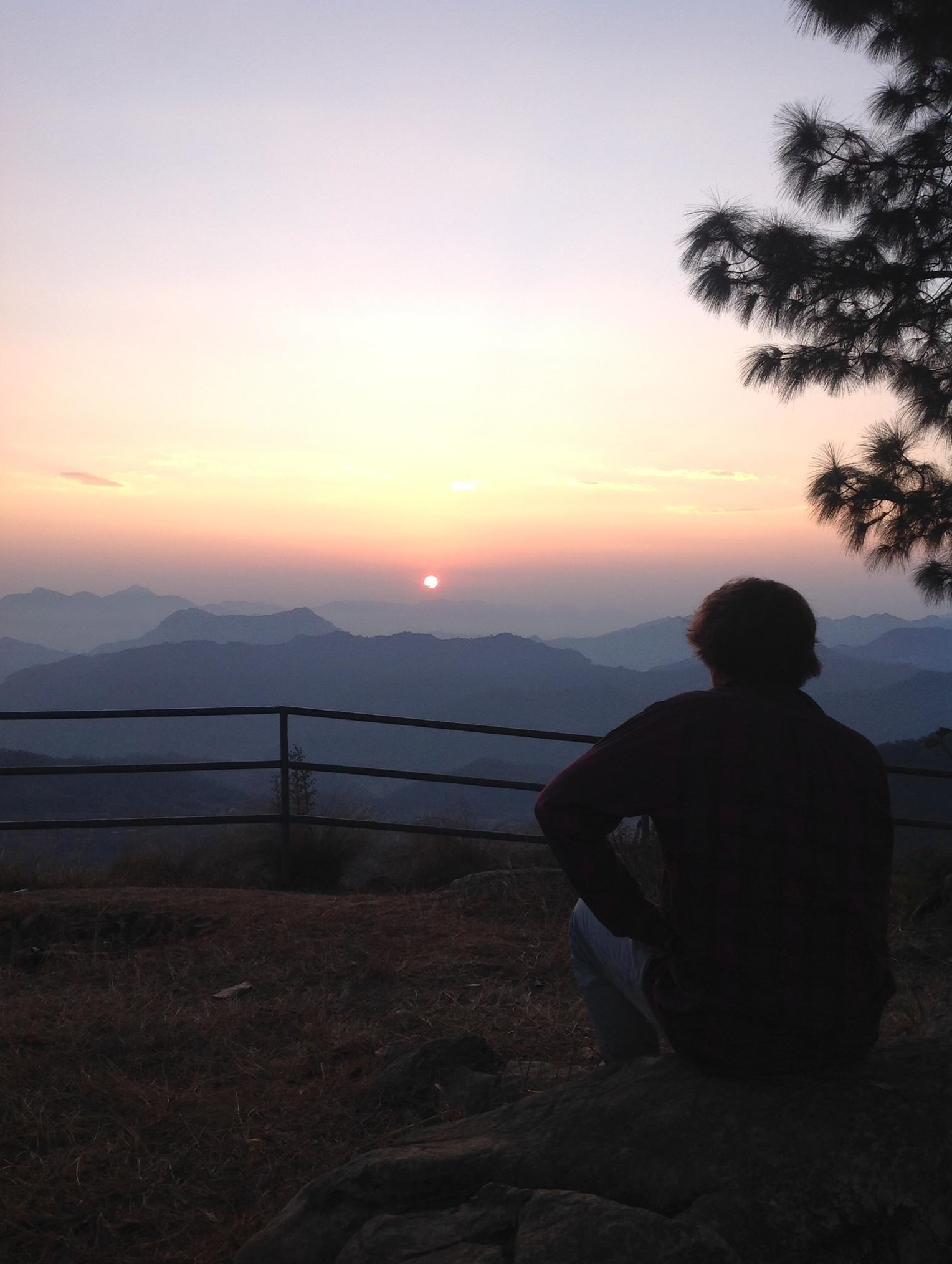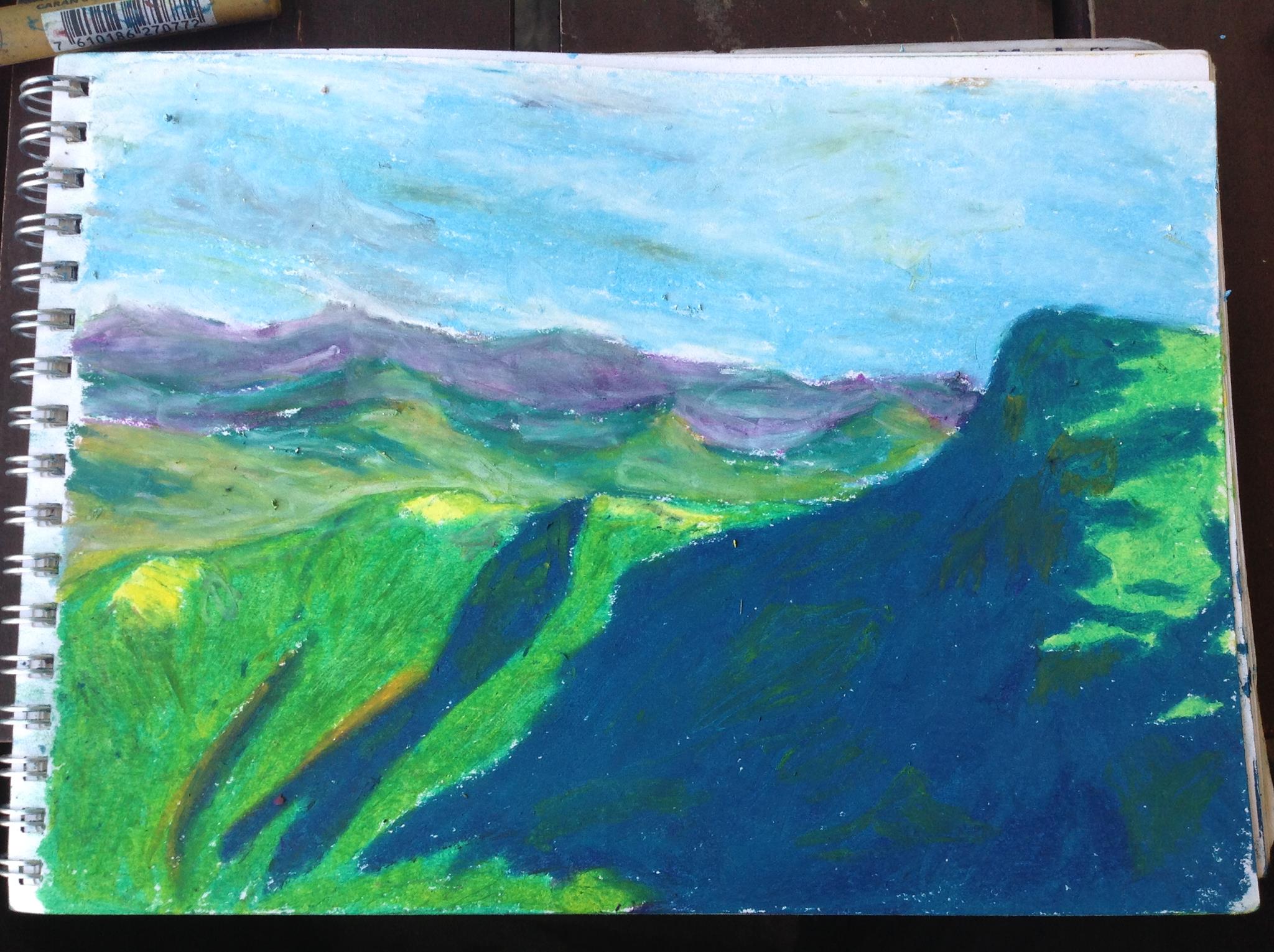Coincidence or destiny? We had a special and creative encounter in the land of the rising sun after a long day of sightseeing in Hiroshima. During our trip to Japan, we came across the painter Philip Cross, who himself was on an inspirational journey through Asia. Deep in painting and flipping through his sketches, he sat at the table, listening to music and seemed inconspicuous at first. But the drawings spoke for themselves and in conversation Philip told of his previous experiences and the art. The deep passion for painting was equally clear, he draws from passion and is almost driven away. In a positive way.
Actually, Philip Cross calls himself a farmer. He comes from a small village in the Dorset region of England, grew up on the family farm and grows organic food on the farm. He sets his talent for drawing deliberately behind, calling it a passion, but not as a profession. He paints because he can not help but because he has to because he enjoys it and he for hours forgetting the time. He does not paint to sell or exhibit, but for his own special experience. These attitudes are good prerequisites for getting really good at something. And his pictures are good.
 He creates his drawings and his art with watercolor, oil and currently mainly with pastel colors. Especially on the journey this is the most practical. The motifs are landscapes and nature observations, but also city life, buildings and people. He paints indoors and outdoors, often takes pictures of the scenery and later works on the painting block with these templates. Great role models are painters like William Turner and John Constable from the Romantic period.
He creates his drawings and his art with watercolor, oil and currently mainly with pastel colors. Especially on the journey this is the most practical. The motifs are landscapes and nature observations, but also city life, buildings and people. He paints indoors and outdoors, often takes pictures of the scenery and later works on the painting block with these templates. Great role models are painters like William Turner and John Constable from the Romantic period.
An important part of the work is the music. Philip himself loves playing piano, even calling himself a piano-addict. Similarly, listening to music plays an important role in painting. Only the combination of visual impression and the feeling that triggers the music inside, brings the respective special creativity. With more accurate knowledge, one can distinguish by style details whether images were made with the music of Neil Young or with reggae by Rico Rodriguez.
The initial question, whether accident or fate is unnecessary. There are basically no coincidences, only situations that you can especially look at and make something out of. It was clear, then, that it was a self-chosen fate to interview Philip Cross on his art J . He grew up on a farm, works as a farmer, but by heart he is an artist. Written down parts of the conversation follow in the next sections.
When I asked you before what do you do, you said you are a farmer.
Yes. I grew up on my parents family farm in a small village in Dorset in England. It´s a small vegetable farm. We do organic vegetables, pretty much every kind. So, you know, I had a pretty good upbringing I think, being out to be in the country side. And subsequently I love the outdoors and the nature and just the quite slow life.
What kind of paintings do you do, what is your style?
For quite a long time I was quite traditional with my art style. I enjoyed Turner and Constable, so I was obviously born in the countryside as well. All of my paintings were landscapes, they were around where I lived and they were mostly acrylic. Just because I never had any training or lessons in art, so I didn´t really know how to use oil paint. But acrylics you get rubbish ones when you are a kid. So I kind of knew how to use them, and as well water colors. I did a few things with those. And lots of drawing. You just kind of basic stuff. And I guess because of that I kind of lost my passion for art, because I wasn´t ever challenging myself, I wasn´t ever trying to make anything particularly. But I´ve come to change that. I came a while ago, maybe two years now, but I´ve decided to come and spark off my art again. Now I´m doing oil pastel and it helps me a lot because the biggest problem with acrylic is I focus too much on being like a photo. I want it to look like the photo because I had such a wide range of colors available. But with the oil pastel I am really limited. So it means I focus much more on the shape and textures and shading rather than the color. Which means I can be a lot more free and I feel you know, it´s just helping my art and I am enjoying again. Because I am not worrying, I am not being to pettifogging about it. I am not having to think, oh my God, it doesn´t look right. I am just enjoying to be as free as I can. You know, if it doesn´t work out, it doesn´t matter. It really doesn´t matter.
A lot of artists go on traveling for doing their art. There is less distraction and more space for the creativity.
Exactly. And I find my best piece I´ve done so far my, well, my two best pieces. Both of them I´ve done when I had the least amount of distractions. So the two best I have done while I was sitting on my bed in a tiny little thing here in Japan, like a capsule. There was absolutely nothing, I have so many cloths and everything and there was no space and one lamp and just my music. And then, nothing exists apart the art. It´s so, you know, like meditation almost. I forget everything, I forget the time. There is no light coming in, so it could be any time of the day or night. I could stand hours, well I do spend hours on painting. And I have no idea, it goes like five minutes. And home, it´s almost impossible there. Even without the work. I like the internet, and as much as I like it outdoors, I like it inside and read a book. There are so many other things that distract you. When you are in that tiny close space, it can be a bit claustrophobic, but it can really really help you focus. Because nothing exists apart from the art and your doing.
Now it´s cold, so you paint inside from the photographs, but when it´s warmer, do you also go outside and paint there?
I like to do both when I can. Because being inside again is a distraction again, because it can be a neutral temperature. So when you go on distractions like your hands getting cold, so your distraction goes away. But when I am outside I can set a mode. Generally when I do something outside I will take some food with me. Because distractions like this can help me. When I´m too focused I can get too tired and being too rushed with my work. It´s good to be outside where there are distractions which aren´t entertainment. There are distractions which I can occasionally look out to, or look around or interact with, and they don´t hold my attention to much to keep me preoccupied for an hour or whatever like a book or the computer would. Or work. So I take some food, and it depends on the time of the year, but if it´s summer I would definitely take a beer or a cider. Definitely helps you keep the creative juices flow. Sometimes I just take a break in between and smoke a pipe or have a cigar and relax. Because that is for me what art is about. I don´t have, especially now, any visionary plan for what. I want my art to turn out to where I go.
So you just do, you just paint.
Yeah, I start and then I forget the time. Today I had plans to go for a really lovely walk. It was sunny. I thought, okay, I have still about an hour till I have to go. Maybe I can make a quick sketch and then… four hours later, it´s completed. And I thought, wow, that is really good. But now it´s 2 o´clock, almost 3 o´clock in the afternoon. It´s going to get dark soon. So alright, why not another piece, I enjoyed it.
Did you ever went to a museum or a gallery for sitting there, watching and to paint a painting?
No. If I´ve done that, it´s been from books again. Unfortunately that was always the problem when I tried to be too perfect. Back then I wanted it like a book in front of me and I can focus on every little bit and really copy every detail. And I don´t like that so much anymore, because I know the moment when I try to copy a piece I go straight back to all that. And I think, oh, they´ve done this line here, I´ve got to copy that, even if it´s more a mistake line. Or some texture added, or something which was intended and I copy that. But that takes actually away from art what it is meant to be.
So you prefer to copy and paint more directly from reality what you see?
Yes, but in my own style way. I don´t want to be photo real. I thing I want to make that photo in front of me, I would just keep the photo. And a lot of those pictures you saw me working on, I literally take the first three minutes when I am outside and see it. It gets my perspective and I can kind of look at it and say, okay, it needs a little bit of shading here or something. But after that, because I am that limited with colors, I have a very set structure how to follow after which is not referred anymore to the picture so much. So it is actually just another form of the photography I´ve done. It became it´s own piece. But it´s different from what the photo was. Maybe the shading and the colors and things. But the essence is still there, what it is. It´s still on that place, it´s just more relaxed.
Do you do abstract artwork as well?
I´ve tried when I was at college, I had art and I had to do that kind of stuff. And then I did a year at University in Plymouth doing art. And there abstract was one of the subjects we had to do. But I never really enjoyed it so much. With the abstracting I liked it, I´ve still got that bit retained, but I want to have it, you know, a certain similarity what I am looking at still. I mean I do a few things, not so much abstract, but simpler. Sometimes I do use some kind of other colors or other patterns, or if it´s a mountain shape, some kind of traditional shape, I change that. But not so often.
About the size of your paintings. I´ve seen these small ones, but do you do as well bigger artworks?
No, no. Way smaller. And this was a problem. Because of doing so much drawing at one point, I kept things small. I like doing small detail. But it never really did me any benefit. I find it still difficult to get away from this small kind of A5 size, these little things, like sketch books. But again this is the positive of me experimenting with oil pastel. You can´t do that. I have an A5 sketch book which have done some oil pastel and acrylic drawings in, and they are good. But you can´t get that small detail unless you get a small piece of paper. So for practicality sake I can´t really have A1 size paper or huge canvases. But I would like try to do some lager scaled ones. Especially if I want to do buildings. Because landscapes with mountains you can pretty much do any size, because you don´t need that detail. But even on the size kind of A2 or A3, I´ve got, it´s still kind of difficult to do the details on buildings. And you know, closer objects. I need to have a certain distance when I draw.
You said you painted buildings and landscapes, what else did you draw here in Japan? Do you as well draw people?
No. I find it difficult to invision in my head what a person should look like on a piece of my art. I´ve got a rough idea but it´s hard to translate for me. And for buildings as well. I have done only one building in oil painting and that´s the first building I´ve done for years. Because I find it again difficult to translate it into a piece of art. Where nature I understand because I look at it so often. I come from there. And I think what it is, is less the kind of outline or a specific image. It´s more a problem to do texture. I understand what the texture is like when I look on a distant hill or mountain, I can almost feel what this texture should be like on a painting. And the same with a close tree, there is a certain texture that I know instinctively. That is how leaves feel. And that´s how I can translate it onto a piece of paper. I can change the texture, I can scribble on it, I can remove things or blob it a bit more, you know, make it a bit more abstract then it were. It doesn´t have to be too realistic. But with people and buildings I have no idea how the textures are. I don´t know how anything moves together, how it fix or anything of the shading works.
There is another art passion of yours. You said before if there is a piano you have to play it. So you´re doing music as well.
I love it. Art is my way of relaxing. But I would lying if I would say it is my fully passion. Like music is a part of me that nothing else in my life is. Music is something I am actually addicted to. I have an addiction to music.
So you get the inspiration from the music?
Yes, yes. Unfortunately music was one of the reasons why I began to lose a bit of passion to art because I was so fixated on it. And the piano is something I can´t walk past. I can´t physically walk past a piano without stopping and playing. Even if I´m 20 minutes late and I know I get shouts for that, if there is a piano in my house and if I go past, I have to sit down and just quickly play something. Even if it´s just for 30 seconds, I have to. And I get nightmares, when I first came to Japan I got nightmares about not being able to play the piano anymore and losing this ability. And so the playing side I have an addiction to but it´s the same with the listening. The listening is definitely more part of my art. I find it very difficult to do art without my music.
So it´s a combination between art and music. You cannot see the one without the other to understand you.
Yes. And I listen to any music. I can listen to classical in the one minute and then rap in the next minute and hip hop or rock or pop or something. But generally when I do my art it´s reggae what I´m listening to. And I always feel like there comes across somewhat. Because none of my paintings are particularly moody. Well reggae can be quite deep and it fills my paintings and gives a lot of depth to them. They´re always quite light, they´re always quite calm. And I feel that´s definitely because of the music.
That means actually you try to draw realistic non emotional in some way, but in the inside you have the music and a lot of emotions. This affects your painting and actually it´s altogether very emotional.
Yeah, it´s definitely a part of it. I can be a bit dispassionate sometimes, my personality. I´m always quite happy and always quite outgoing. But I don´t always feel a lot of the emotions when I portrait. And my art is definitely one hundred percent that kind of external projection of those emotions. So it may not be happiness, but there is certainly contentedness in my art from listening to the music. It takes me away from everything around me. I think it´s also why until recently when I thought about to sell or to promote my art. The art when I finished a good piece, I just can´t bare parting with it. Because it is that extension of myself and much more. It´s made and all the art what I do not with the intention of selling it. I´ve given parts away, I´ve given art away for presents and things and I´ve sold some art before. I did as well commissions and things. But yeah, when I do it, it´s completely for myself. All of those pieces, I like to sell them, but the main worth for me is the fact that I enjoy opening up a sketch book and seeing the paintings and going to the next page. And I am always disappointed when I get to the blank page. Because my aim for the sketch book is to be full. So that I can open it and go to every page and always see a painting or a drawing that I´m pleased with.
Do you remember which songs you have been listening to while you were drawing the paintings?
There is so much in my head. All of those I have done with a recent purchase. But some I´ve listened to for a long long time is Rico Rodriguez. He´s a trombone player. A really really good reggae trombone player. And they´ve definitely got a different quality than the other ones I´ve done. I´ve done my drawings of country ones, and they always had some rougher style when I was listening to Neil Young. And I can always tell the drawings I´ve done with Neil Young, because they are a bit harder around the edge. Well while all the ones I´ve done with reggae have always been portraits or have been flowers. You know, more delicate drawings.
So if you know all the filters, like the music, you could watch the painting and see the music in the artwork. The observer can see to what type of music you were listening to. Like ok, this one here was done with reggae, or this one with country, or this one with heavy metal.
Well yeah, I quite like to see what kind of art I do with that. Maybe I should try with some Iron Maiden and see what happens to my art. I don´t know if it would come across to other people, but it´s again for myself.
What are your plans for the future?
I am not so keen of the idea of big galleries. That wouldn´t inspire my idea. The thing with the galleries is, you know, on our farm we have got a farm shop with a lot of units. And one of them is actually a small gallery. But it´s quite a personal one. And that´s why I like quite spaces like that there. It´s constantly changing. It´s not a big exhibit thing, quite a private and personal one. But frankly I would prefer my pieces ideally to go in people`s houses. Or in cafés or things like that. Somewhere where it could be appreciated by people who aren´t there to look at art. It´s me talking about my art and the inspiration and feelings behind it, but I don´t like the idea someone standing in front of it in the gallery and saying, oh, you can see this and that. The most I want someone to say about my art is: `Look at that over there, it´s a good piece, I like that! I wouldn´t mind having that in my house.´ Or: `That looks really good over there !´ That is all the praise I could want from a piece of work. Even if it doesn´t sell.
You like to give a nice feeling to others by watching your art.
Yeah, the reason I like landscapes as well is because I find the pleasing to look at. And I think a lot of people do. Especially people who don´t get to see them so often. Somebody asked me to do a landscape for a train set that they had. And it´s one of the nicest pieces I´ve ever done. It definitely wasn´t one of the best pieces I´ve ever painted but it´s one of the ones I´m mostly proud of because at the end he looked at it and said: `That is exactly what I wanted! It´s not a masterpiece but it fixes good to the rest, it´s nice to look in my house.´ It was a drawing all around his wall with big murals like 25 meters long, it was a big thing. I had to work for around 15 or 20 centimeters in height and then the rest was all around tall. But yeah, this was one of the nicest things I ever had. He didn´t even say anything particularly amazing about it. He didn´t overreact. He just said honestly, he really liked it. And that is what I want for my art in the future. It´s for just a few people. Ok, well, I´ve got a bit of an ego, there should be quite a few people, but as well cafés or restaurants.
The next step would be to go more forward and showing your art more.
I just want to be slightly carefully because I don´t like the idea of it becoming a job. I need to have a job with it. So that I can indulge, almost like a guilty pleasure, I can indulge in my art and make a bit of extra money for let´s say art equipment or just to spend on something I want.
INFOTHEK
![]() Artist: PHILIP CROSS
Artist: PHILIP CROSS
![]() Email: philipcross.55@gmail.com
Email: philipcross.55@gmail.com
MORE ARTICLES ABOUT BRITAIN
>>> Sprayer CURLY <<<
>>> Logan´s Close – Edinburgh <<<
>>> Illustrator Junior Tomlin <<<
>>> Painter Philip Cross <<<
>>> Streetart Camden – London <<<
>>> Comic Illustrator Johnny Trip <<<
>>> Designer Beth Williams <<<
>>> Streetart Manchester <<<
>>> London Sights & Urban Life <<<
>>> Camden Architecture & People <<<
>>> Big Ben & Westminster <<<
>>> Science Museum London <<<
